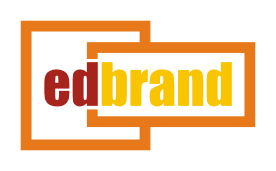DAVID E. SANGER AND NICOLE PERLROTH explore the future of encryption technology, and its relationship with the government. He writes about the advancements in technology at big tech companies like Google and Apple, and how they deal with cybersecurity issues in an increasingly dangerous world. The government, however, is steadfastly anti-encryption, since it prevents them from being able to gain access to the private lives of their citizens, a hallmark of the modern American government. This beef extends to telecommunications, with the government demanding access to people’s personal phone calls at any time. Large companies are focused on encryption strong enough to prevent incidents at stores like Target, when large scale thefts of credit card numbers have occurred in the past. The government however, is unlikely to back down. Magana examines what this means for you and me, and for technology as a whole.
Read an excerpt of the article written by DAVID E. SANGER AND NICOLE PERLROTH:
President Obama was to meet here on Friday with the nation’s top technologists on a host of cybersecurity issues and the threats posed by hackers. But nowhere on the agenda is the real issue for the chief executives and tech company officials who will gather on the Stanford campus: the growing estrangement between Silicon Valley and the government. The long history of quiet cooperation between Washington and America’s top technology companies — first to win the Cold War, then to combat terrorism — was founded on the assumption of mutual interest. But the Obama administration’s efforts to prevent companies from greatly strengthening encryption in commercial products like the iPhone and Google’s email services has shattered that assumption. And there is continuing tension over the government’s desire to stockpile flaws in software — known as zero days — for future use against adversaries. ‘‘What has struck me is the enormous degree of hostility between Silicon Valley and the government,’’ said Herb Lin, who spent 20 years working on cyberissues at the National Academy of Sciences before moving to Stanford several months ago. ‘‘The relationship has been poisoned, and it’s not going to recover anytime soon.’’ Mr. Obama’s cybersecurity coordinator, Michael Daniel, concedes there are tensions. American firms, he says, are concerned about international competitiveness, and that means making a very public show of their efforts to defeat American intelligence-gathering by installing newer, harder-to-break encryption systems and demonstrating their distance from the United States government. The F.B.I., the intelligence agencies and David Cameron, the British prime minister, have all tried to stop Google, Apple and other companies from using technology that the firms themselves cannot break into — meaning they cannot turn over emails or pictures, even if served with a court order. The firms have vociferously opposed government requests for such information as an intrusion on the privacy of their customers and a risk to their businesses. ‘‘In some cases that is driving them to resistance to Washington,’’ Mr. Daniel said in an interview. ‘‘But it’s not that simple. In other cases, with what’s going on in China,’’ where Beijing is insisting that companies turn over the software that is their lifeblood, ‘‘they are very interested in getting Washington’s help.’’ Mr. Daniel’s reference was to Silicon Valley’s argument that keeping a key to unlocking terrorist and kidnappers’ secret communications, as the government wants them to do, may sound reasonable in theory, but in fact would create an opening for others. It would also create a precedent that the Chinese, among others, could adopt to ensure they can get into American communications, especially as companies like Alibaba, the Chinese Internet giant, become a larger force in the American market. ‘‘A stupid approach,’’ is the assessment of one technology executive who will be seeing Mr. Obama on Friday, and who asked to speak anonymously. That tension — between companies’ insistence that they cannot install ‘‘back doors’’ or provide ‘‘keys’’ giving access to law enforcement or intelligence agencies and their desire for Washington’s protection from foreign nations seeking to exploit those same products — will be the subtext of the meeting. That is hardly the only point of contention. ...Read more
